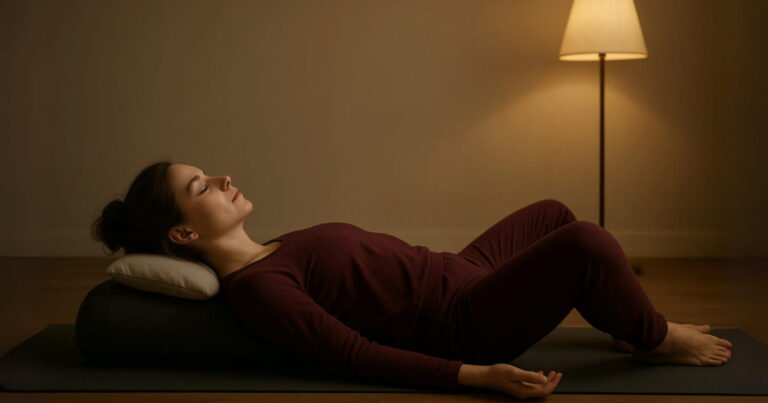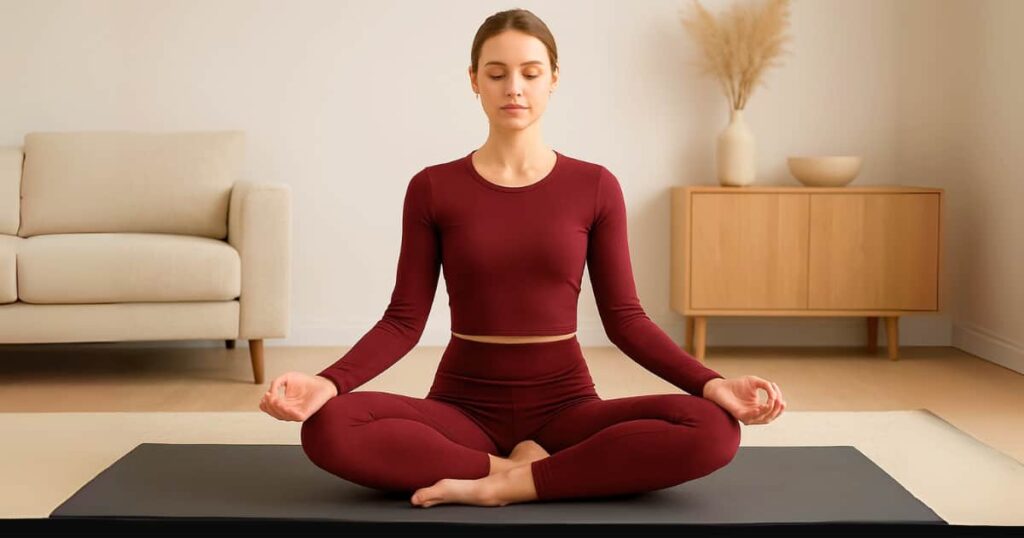
Look, life is loud, but practicing Yoga for Stress Relief can help. Your phone is buzzing, brain is racing and to-do list is judging you. We all get wound up tighter than a cheap watch.
I used to deal with it by eating cereal for dinner while watching videos of people restoring old rusted tools. Relaxing? Sort of. Helpful? Not really.
Then I found something better. Not a miracle, just a method. Yoga for stress relief. And before you imagine some impossible pose, stop. This isn’t about that. It’s about the stupidly simple power of breathing. Actually breathing, not just the stuff you do to stay alive. It’s about stretching out the weird knot in your back you get from stress-slouching at your desk.
You don’t need special clothes or to know what a “chakra” is. You just need five minutes and a floor. It’s less about bending your body and more about unkinking your mood.
So if you’re done feeling frazzled, let’s try this. No pressure, no spiritual stuff, just a quiet little reset for your busy head.
Why Choose Yoga for Stress Relief?
Ever have one of those weeks where your brain feels like it’s been through a blender—and someone forgot to put the lid on? Yeah. Me too. I used to handle stress by “powering through,” which is just a nice way of saying I’d drink too much coffee, stare blankly at spreadsheets, and forget to eat lunch until 4 PM. Not exactly a wellness strategy.
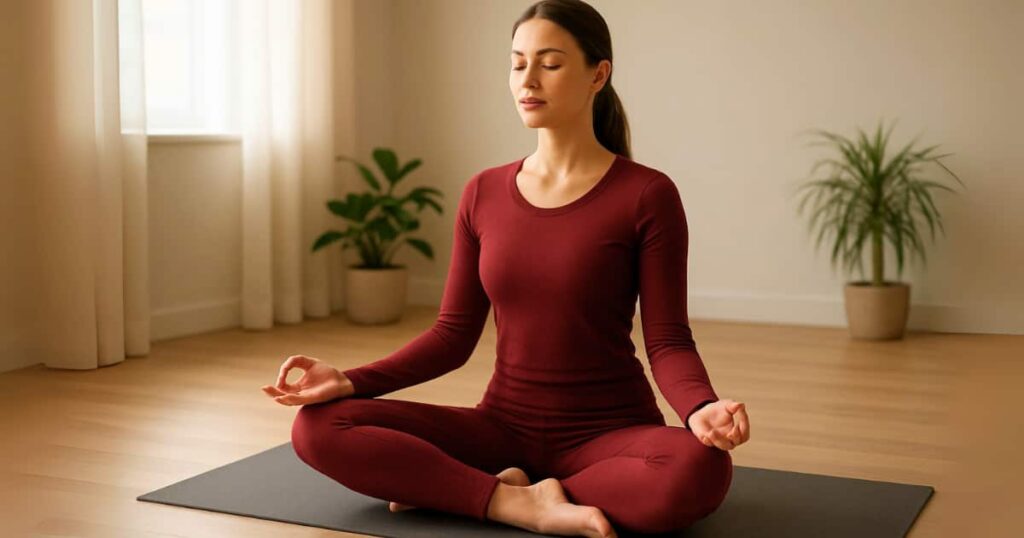
Then I found yoga for stress relief—and before you imagine some serene, incense-filled room with people humming in perfect harmony, let me stop you right there. My first time, I wore socks with holes in them, slipped halfway through a simple pose, and spent the last five minutes seriously wondering if I could nap right there on the mat.
But here’s the thing: it worked anyway.
Not because I transformed into a graceful yogi on day one, but because for the first time all week, I actually breathed. Like, really breathed. Deep belly breaths that made my ribs stretch and my mind slow down. No one was grading me. No one was watching. It was just me, my janky towel-mat, and the beautiful silence of not trying to accomplish anything.
Turns out, you don’t need to be flexible, spiritually woke, or even slightly coordinated. You just need a floor and a willingness to sigh really, really loudly.
So if you’re tired of feeling wound up, overstimulated, and one inconvenience away from a melodramatic meltdown… maybe just try it. Not to become good at yoga, but to become better at being you—unrushed, unedited, and finally… quiet.
Key Benefits of Yoga for Stress Relief
Ever have one of those moments where your brain feels like a browser with 17 tabs open, one’s playing music you can’t find, and another’s definitely an existential crisis dressed up as a shopping cart? Welcome. Have a seat. Or don’t—your hips are probably too tight anyway.
I got into yoga for stress relief not because I’m graceful—trust me, I trip over flat ground—but because my brain wouldn’t stop offering unsolicited commentary on every. little. thing. And my lower back? Let’s just say it had more knots than a boy scout’s rope collection.
Here’s what I learned the hard way: yoga doesn’t care if you can touch your toes. It cares if you’re willing to try. It’s not about silencing your thoughts (impossible), but letting them float by like weird little clouds while you focus on something simple. Like breathing. Or not falling over.
And the magic isn’t in the perfect pose—it’s in the sigh after you release one. It’s in the weird crack your spine makes when you finally stretch that spot that’s been bugging you all week. It’s in realizing your shoulders don’t actually need to hug your ears 24/7.
You don’t need a fancy mat. You don’t need to be serene. I’ve unrolled my same sad mat with bedhead, yesterday’s socks, and the emotional baggage of someone who just scrolled through the news. And every time, I stand up feeling just… lighter. Less tangled. More me.
So if you’re stressed, stiff, or just sick of your own brain’s greatest hits album of anxieties… maybe just lie down on the floor. Not to perform. Just to breathe. To sigh loudly. To let go.
Best Yoga Styles for Stress Relief
Okay, let’s be real. Not all yoga is about twisting yourself into a pretzel. Some types are actually designed for one thing: to help you unwind big time.
If your brain feels like a browser with too many tabs open, one of these slow, gentle styles might be your new best friend.
1. Restorative Yoga: The Expert-Level Nap
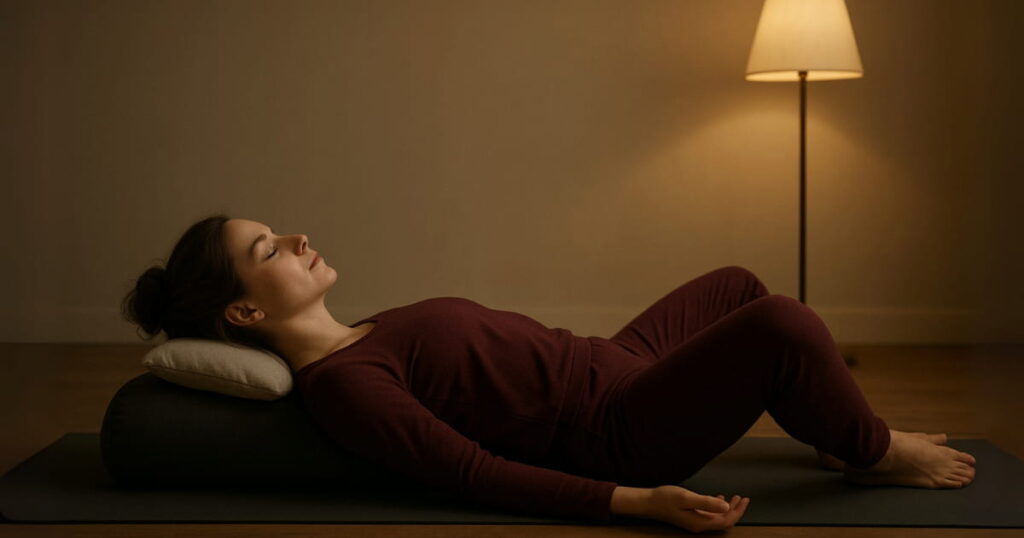
Think of this as permission to do absolutely nothing. You get comfy in super easy poses propped up by pillows and blankets for, like, five whole minutes. Your only job is to breathe. It’s basically your body’s off-switch. Highly recommend for anyone who forgot how to sit still.
2. Yin Yoga: For When You’re Feeling Stiff & Grumpy
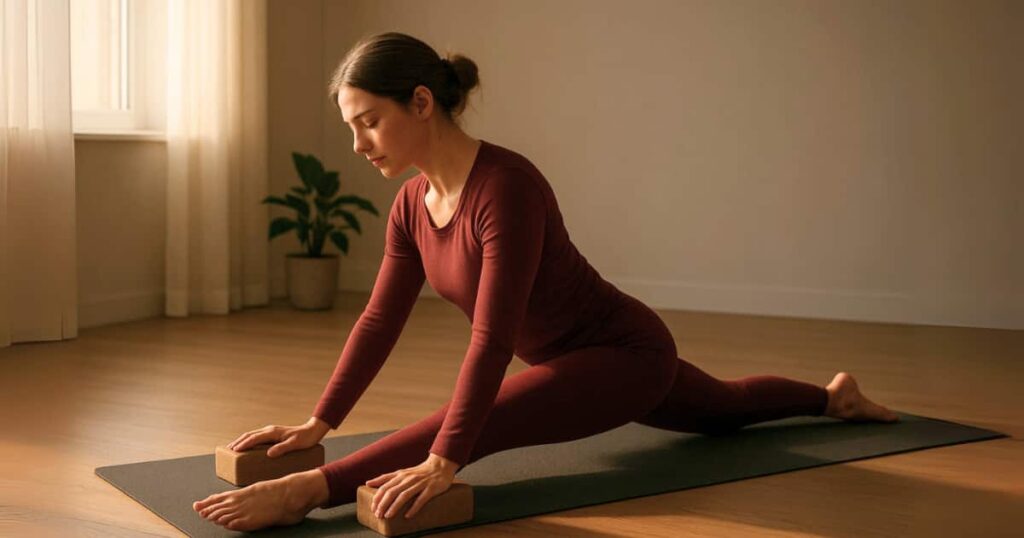
This one targets all those deep, cranky tissues that hold onto stress. You settle into simple floor poses and just… stay there. It’s not about stretching muscles; it’s about melting into the floor and telling your tight hips it’s okay to let go. Surprisingly awesome for calming a chatty mind.
3. Chair Yoga: De-Stressing On The Down-Low

Perfect if you’re at a desk all day or just find the floor intimidating. You do all the gentle stretches and calming breaths while sitting or holding onto a chair. It’s the ultimate stealth move to beat stiffness and sneak in some calm, no fancy gear required. Your co-workers will just think you’re really thoughtful.
4. Beginner Yoga: No Experience Necessary
This is where everyone should start! It’s all about gentle moves, learning to breathe slowly, and finishing with that famous awesome relaxation. You can do it in your living room tonight. It’s your straightforward, no-pressure guide to quieting the noise and finding a little peace.
So, maybe skip the frantic scrolling for ten minutes and give one of these a shot. Your frazzled nerves will send you a thank you note.
Simple Yoga Sequence to Calm Your Mind & Body
Seriously. My brain is a mess most of the time. I found this routine by accident when I was trying to avoid cleaning my kitchen. It’s not magic, but it’s the next best thing. You don’t need to be good at it. You just need to do it.
1. Become a Burrito (Child’s Pose)
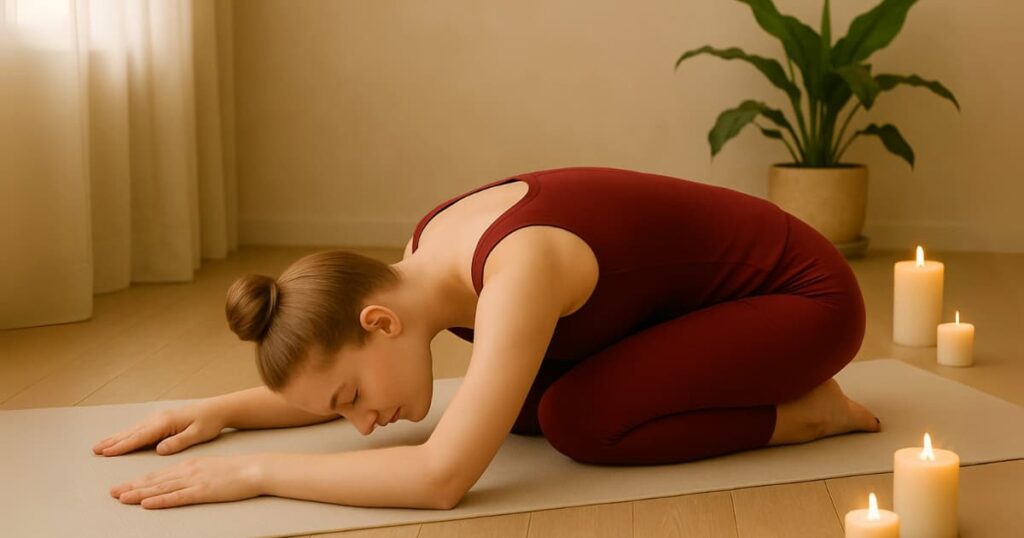
Get on the floor. Kneel, then sit your butt back on your feet and fold over so your stomach is on your thighs and your head is on the floor. Arms out or by your side, who cares. Your only goal is to breathe in and out like a average person. Think about nothing. Or think about what you’re having for dinner later. Either is fine.
- Why Bother: It makes your back stop yelling at you. It’s the quickest way to tell your entire body to stand down from red alert.
2. The Slouch (Seated Forward Something-or-Other)
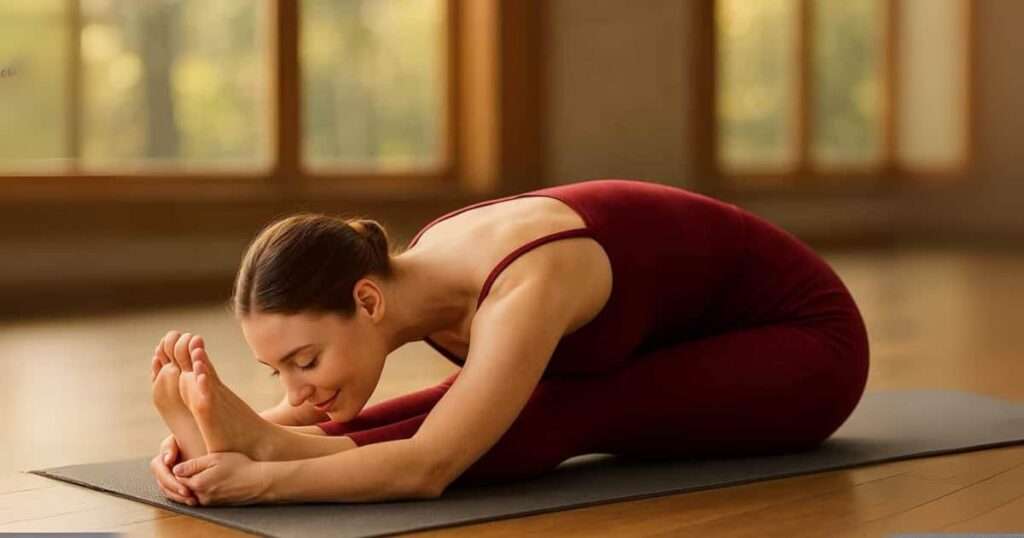
Sit down. Legs out. Now, slump. I mean it. Just slump forward and grab your legs wherever your hands land. If you feel a stretch, great. If you just feel like you’re sitting there slouching, also great. The point is to be still for a minute.
- Why Bother: It gets the cricks out of your neck and back. It forces you to stop looking at a screen and just look at your knees for a while. It’s boring in the best way.
3. Feet on the Wall (The Upside-Down Break)
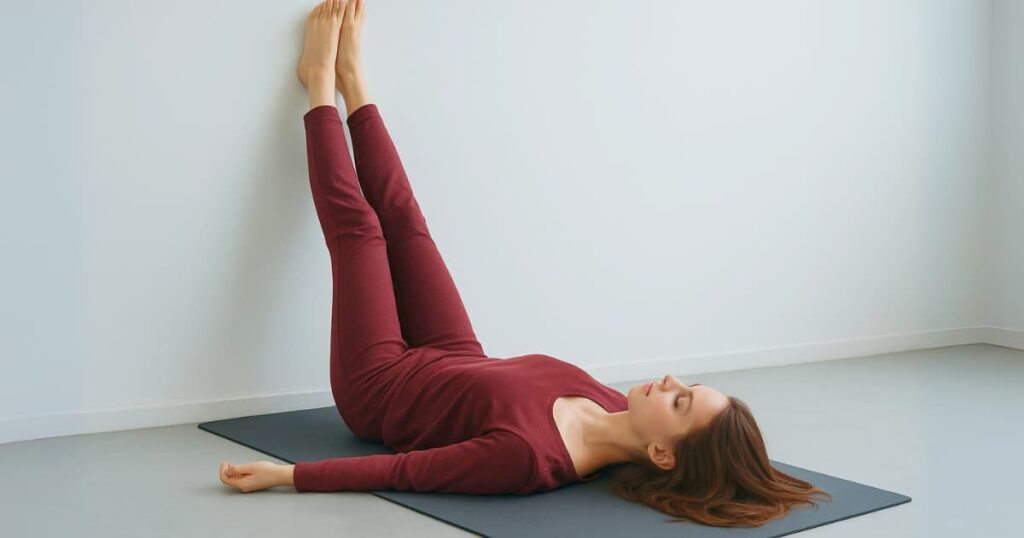
Lie on the floor and put your calves on the seat of your couch, or your legs straight up a wall. Yes, you look ridiculous. No, nobody is watching. Stay here for like, three whole minutes. It feels weirdly good.
- Why Bother: All the stress that pooled in your feet and legs after a long day of walking around? This drains it out. It feels like a cool washcloth on a fevered brain.
4. The Cat-Cow (The Spine Wiggle)

Get on your hands and knees. Arch your back up like a Halloween cat, then dip it down like a cow. Do this slowly. Sync it with your breathing. Do it until your spine stops feeling like a glued-together puzzle.
- Why Bother: It’s a direct attack on the shoulder and back tension you get from hunching over a laptop. It wakes your body back up.
5. The Corpse Pose (The Official Time-Out)
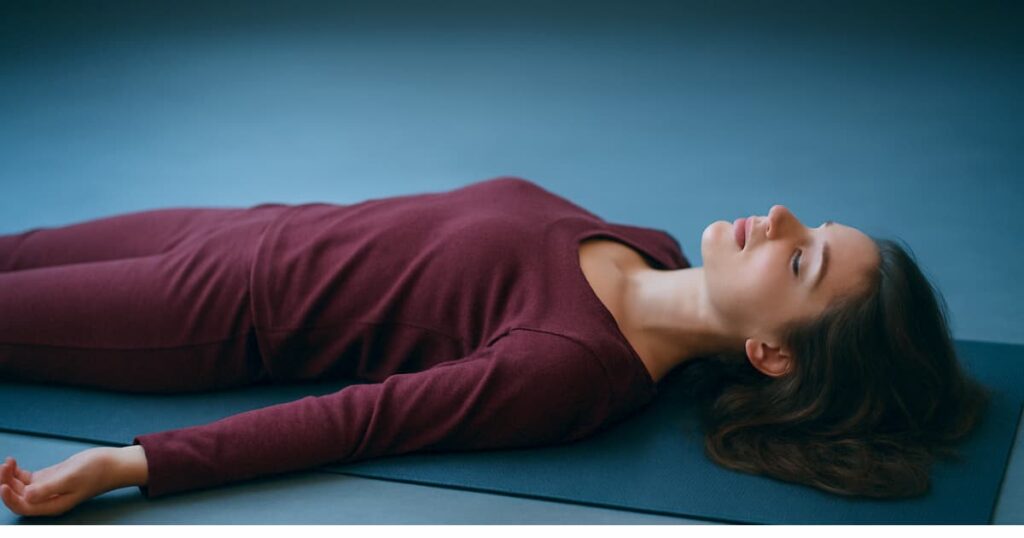
Lie flat on your back. Arms out, palms up. Legs relaxed. Now, play dead for two minutes. Don’t move. Don’t scratch that itch. Just breathe and notice the ceiling. That’s the whole thing.
- Why Bother: This is where the quiet actually sinks in. It lets your nervous system finally believe the workout is over and it can stop being so defensive. You’ll get up feeling less jangled.
That’s it. No coach, no special pants required. Just a floor and a willingness to feel slightly less overwhelmed for a few minutes. You can do that.
Yoga for Stress Relief and Anxiety: The Breath Connection
When we’re stressed, we often breathe like we’re being chased by a bear. As a result, it’s all in the chest; furthermore, it’s fast, and consequently, it makes everything worse.
Therefore, here’s how to fight back. Fortunately, it’s stupidly simple.
1. The Finger Plug Method (Nostril Switching)
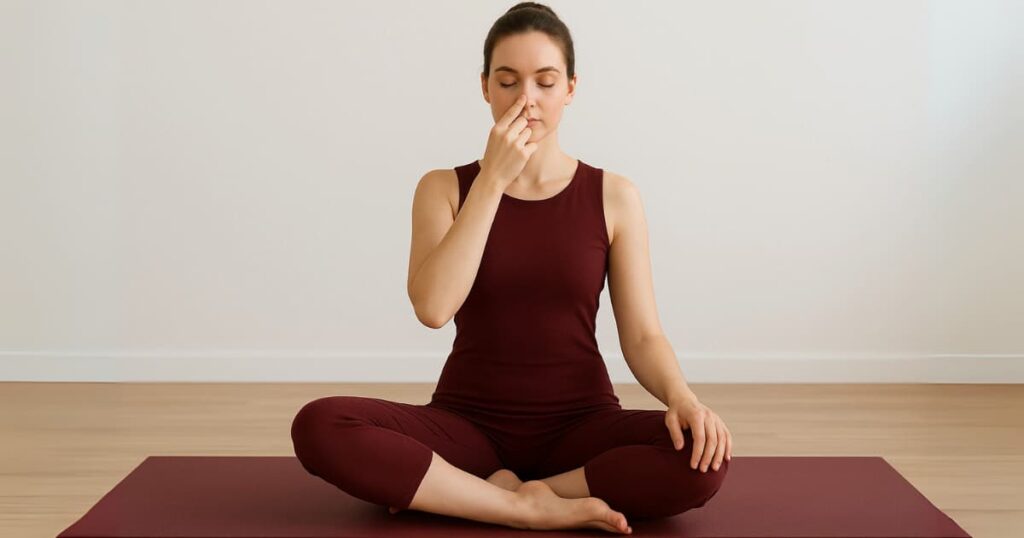
First, you’re going to feel silly. However, that’s good; in fact, that’s the entire point.
To begin, take your right hand. Then, use your thumb to close your right nostril. After that, breathe in slowly through your left.
Next, use a different finger to close your left nostril. Subsequently, breathe out through your right.
Then, breathe in through the right. Immediately after, close it. Finally, breathe out through the left.
Why it works for me: Essentially, it forces my brain to focus on the counting and the switching. As a result, it can’t also simultaneously plan my entire week or worry about climate change. In other words, it’s a brain hack.
2. The 4×4 Box (For When You’re About to Lose It)
Start by picturing a square. Specifically, each side is four seconds.
First, breathe in for four. Then, hold it for four. After that, breathe out for four. Finally, hold empty for four.
That’s it; in short, you’re just making a box.
Why it works for me: Primarily, this is my nuclear option. For example, when my heart is pounding, this physically slows it down. Moreover, it tells my body the boss is back in charge. Therefore, it works every single time.
3. The Baby Belly Breath (The Easiest Thing on Earth)
First, lie down if you can. Then, put a book on your stomach.
As you breathe in, try to make the book go up. Conversely, as you breathe out, let it fall.
As a result, your chest should barely move.
Why it works for me: Basically, this is how we’re born breathing. However, we unlearn it. Therefore, going back to it feels like coming home. Ultimately, it’s the deepest, simplest reset button I own.
So, you don’t need to be good at it. Instead, you just need to do it for three minutes. And afterward, it will shift something. I promise; after all, it’s the cheapest, most available medicine in the world. Best of all, it’s right under your nose
How to Get Started with Yoga for Stress Relief
Let’s keep this simple and honest. First, you want to start yoga. Great! So here’s exactly how to do it without overcomplicating things.
Start small. Really small.
For example, try just one pose. Alternatively, breathe slowly for two minutes. That’s honestly enough. In fact, small steps like this help you keep going without quitting.
Next, make your space calm.
Remember, you don’t need special lights or music. Instead, just soften the lighting. Then, maybe play quiet sounds—or use no sound at all. Ultimately, do what personally helps you relax.
Also, don’t worry about bending like a pro.
Instead, focus on your breath. Additionally, notice how your body feels. That’s truly more important than touching your toes.
Moreover, connect yoga to things you already do.
For instance, stretch after a walk. Or breathe deeply before bed. Fortunately, little efforts like these really add up over time.
Final thought:
Above all, be consistent. Also, be kind to yourself. After all, you don’t need to be perfect. So just start.
FAQs on Yoga for Stress Relief
Honestly? Not much. You don’t need to spend hours on the mat. Just ten to fifteen minutes, a couple of times a week, is enough to start feeling better. The secret is not how long you do it, but that you actually do it. Small things done often make a big change.
It’s not a competition! They are like a good team. Yoga is great for your body. It helps you let go of all that tension you carry in your shoulders and back. Meditation is great for your mind. It helps quiet the noisy thoughts in your head. Doing a little bit of both is a powerful combo.
Yes, you can! You do not need to be bendy like a pretzel. Start with super simple poses. Child’s Pose is like taking a cozy nap on the floor. Legs Up the Wall is exactly what it sounds like and feels amazing after a long day. All you need is a little bit of free floor space and a willingness to feel good.
The best time is… anytime you can! Really.
In the morning to help you start your day in a calm way.
In the evening to help you let go of the day’s stress before bed.
But the absolute best time is simply when you remember to do it. Even a two-minute stretch at your desk counts!
Concluding Remarks on Yoga for Stress Reduction
Our world loves to tell us to go faster and do more. It can be exhausting.
Yoga does the opposite. It is not another task for your to-do list. It is a quiet invitation to slow down. To take one deep breath. To just be yourself for a few minutes.
You do not need to be perfect. You can find calm through a simple stretch, a quiet moment of breathing, or just lying on the floor.
This is a natural way to feel less stressed. It is not a quick fix, but a way to build a more peaceful you.
The best time to start is now. You do not need to do a lot. Try just one simple pose. Let it remind you that a little bit of peace is always there, inside you, waiting to be found.
A Quick and Important Note
Please remember: this article is here to share helpful ideas.
It is not medical advice.
If you have any health concerns or existing injuries, please talk to your doctor first before starting any new activity like yoga.
Your safety is the most important thing. Always get personalized advice from a healthcare professional who knows your situation.
🔗 Love mindful living? Follow us on Pinterest and LinkedIn for daily meditation tips, peaceful visuals, and more


